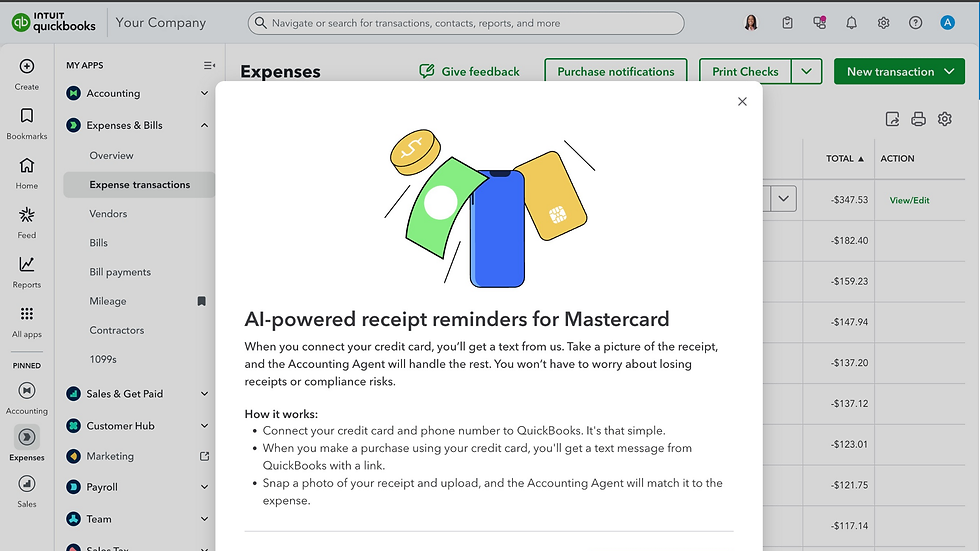Improve your Company's Brand Identity with Customized Sales Forms in QuickBooks
- Susan Cook

- Apr 8, 2021
- 4 min read
QuickBooks comes with ready-to-use sales form templates, but did you know you can customize their contents and appearances to improve brand identity?
As a customer yourself, you may think you don't pay much attention to the aesthetic of an invoice, but in truth, any and all communication we receive from the businesses we work with influences our perception of them. Nuanced things--like the appearance of an invoice--impact our answers to questions like, "Is this company competent?" "Is their business relevant?" and "Do they prioritize the customer's experience?" Ensuring that your invoices appear polished, professional, and easy to understand is an easy way to portray your business to customers in a positive light. Some of your customers will just glance at your invoices and pay them. But you shouldn’t miss an opportunity to make a good impression, especially when it’s as painless as customizing your sales forms in QuickBooks. Here’s how it works. Modifying Your Templates QuickBooks comes with pre-designed templates for each type of sales form it supports: invoices, estimates, credit memos, sales receipts, purchase orders, statements, sales orders, and payment receipts (you may not have access to all of these depending on what version you’re using). You can see the list by opening the Lists menu and clicking on Templates.

Let’s look at an invoice template. Right-click on Intuit Service Invoice in the list to open the action menu, then click Edit Template. Click on Manage Templates, then click Copy at the bottom of the window to make a copy of the original to practice with safely. The Preview in the right pane will be named Copy of Intuit Service Invoice. Click OK.
Tip: You can use the Copy command to make and modify multiple copies of any sales form that you can use for different purposes and/or customers.
Next, you'll find yourself back at the Basic Customization window. Check to make sure the Selected Template field reads Copy of Intuit Service Invoice. You can practice using this one and delete it when you're ready to work on your main template.
Click the box in front of Use logo and browse in the window that opens to find it. Double-click on it, then click OK in the small window that opens to confirm, and QuickBooks returns you to the previous window with the logo showing in the Preview pane. To change the color of the invoice, click the down arrow in the field below Select Color Scheme. Choose the one you want and click Apply Color Scheme.

To change the fonts for any of the four fields pictured above, click on the desired field and then click Change Font to open a window with your options. Below will be a list of fields available for your Company & Transaction Information that is positioned next to your logo. You can click boxes to check or uncheck the fields you want to appear.
Warning: If you select too many fields, you may have to use the Layout Designer to position them on the invoice, which can be challenging.
You can also turn on the Status Stamp and Past Due Stamp to display the status of each invoice (Paid, Pending, etc.) using a graphic that looks like you’ve stamped the form.
Selecting Fields and Columns
QuickBooks also gives you control over the fields and columns that appear in the body of the invoice. Click Additional Customization at the bottom of the window. In the window that opens, you can change three things for the content that appears in the header, footer, and columns. By clicking boxes and entering text, you can indicate which fields should appear on the screen and which should be printed. You can also edit the default field titles. Click on each tab at the top to see all of your options.

As you’re making these changes, QuickBooks will warn you that you might have overlapping fields and that, again, you’ll have to use the Layout Designer. You can click Print Preview at any time to see what your finished invoice will look like and decide whether you want to try to modify your design. If you’re just adding, deleting, or moving (drag and drop) a few fields, this may work fine for you. But QuickBooks is not a sophisticated graphic design program, and your results may not look professional if you attempt too much. In other words, keep it simple.
When you’re done modifying your template, click OK. "Copy of Intuit Service Invoice" will now appear in the list of options that drops down under the Template field at the top of the screen when you go to create an invoice. If you want to edit, delete, or hide it by making it inactive, you can do so by going to Lists | Templates and clicking on the name of the template, then clicking the down arrow next to Templates to open the action menu.
Tip: You can also click Duplicate, which will open a list of all of your sales forms. Select one and click OK, and you’ll be able to transfer your formatting preferences over to it.
Customizing templates in QuickBooks is a fairly simple process that can have a really positive impact on your brand identity. However, if you find yourself needing help troubleshooting your templates, just reach out to us. There’s so much this software can do to help you understand and manage your finances; whether you want to expand your use of QuickBooks or simply need help developing a daily workflow, we can help you make the most of your QuickBooks subscription.





Comments